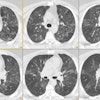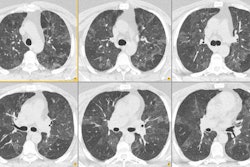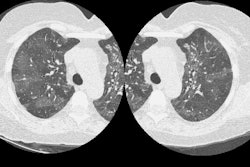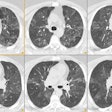Correlation of aging and smoking with air trapping at thin-section CT of the lung in asymptomatic subjects.
Lee KW, Chung SY, Yang I, Lee Y, Ko EY, Park MJ
Department of Radiology, Kangnam Sacred Heart Hospital, Hallym University College of Medicine, Seoul, South Korea.
PURPOSE: To assess the frequency and degree of air trapping at thin-section computed tomography (CT) of the lung in relation to age and smoking history in asymptomatic subjects. MATERIALS AND METHODS: Thin-section CT of the lung was performed prospectively at end inspiration and end expiration in 82 subjects (27 smokers, 55 nonsmokers) without any history of pulmonary diseases and without present pulmonary symptoms. The frequency and degree of air trapping were evaluated according to age and smoking status. RESULTS: The overall frequency of air trapping was 52% (43 of 82 subjects, kappa = 0.72). Air trapping was found in three of 13 (23%), seven of 17 (41%), nine of 18 (50%), 11 of 17 (65%), and 13 of 17 (76%) subjects aged 21-30, 31-40, 41-50, 51-60, and greater than or equal to 61 years, respectively. The frequency of air trapping increased with age (P < .05). The degree of air trapping had a significant correlation with age (r = 0.523, P < .001) and was higher in smokers with a smoking history of more than 10 pack-years (P < .05). CONCLUSION: Air trapping was found in approximately 50% of asymptomatic subjects. The frequency of air trapping increased with age, and its severity increased with age and smoking.






